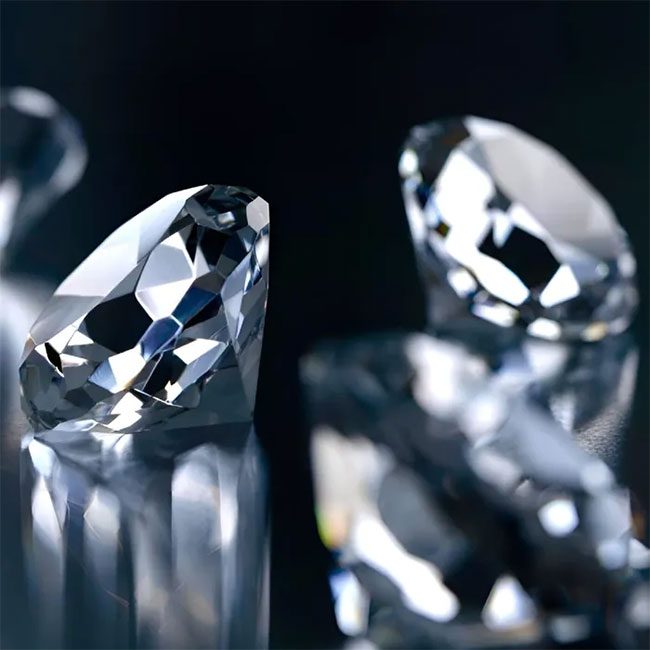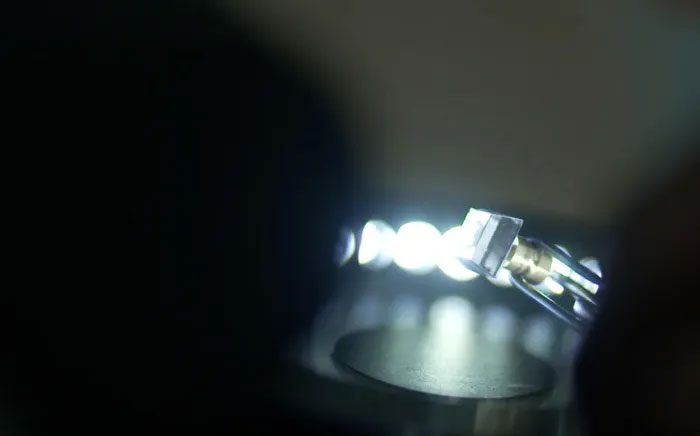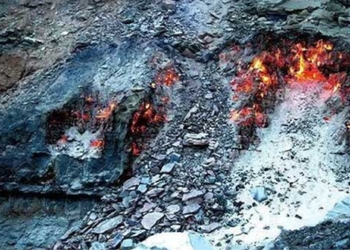Companies in the UAE are increasingly interested in cultivating laboratory-grown diamonds rather than importing large quantities from around the world.
Diamonds are the hardest material on Earth, and finding large quantities of these precious stones in nature is relatively difficult.
For thousands of years, humans have dug deep into the earth in search of diamonds, creating some of the world’s largest pits in Russia and South Africa, reaching depths of up to 625 meters below the surface.

The search for large quantities of diamonds in nature is relatively challenging.
This mining process negatively impacts both nature and people. Workers are forced to work under hazardous conditions, and ecosystems are severely affected.
However, mining is not the only way to obtain diamonds.
According to the International Gem Society, the first laboratory-grown diamond was produced in the 1950s, and this technology continues to evolve today.
Laboratories have been able to produce quality gemstone crystals at affordable prices, often up to 80% cheaper than natural diamonds, without incurring high costs.
The cultivation of synthetic diamonds has now emerged in places we might not expect, such as deserts, according to CNN. Notably, the United Arab Emirates (UAE) leads the world in diamond import and export, despite not having any diamond mines.
Diamonds “in the Desert”
In 2022, entrepreneur Sabeg co-founded 2DOT4 Diamonds based in Dubai. This company became the first to produce, cut, and craft laboratory-grown diamonds in the UAE.
“Our idea is to bring the diamond mine to consumers. Instead of importing diamonds from various parts of the world, this precious stone will now be produced and sold locally,” Sabeg stated.
The name 2DOT4 comes from the refractive index of diamonds, meaning the speed of light passing through a diamond compared to air is about 2.4 times slower.

Mohamed Sabeg inspecting a laboratory-grown diamond. (Photo: Paul Devitt/CNN).
For Mr. Sabeg, naming the company based on the physical properties of the gem is intentional. He wants to demonstrate that the stones created in the laboratory are identical to natural diamonds.
“The only difference from natural diamonds is that our diamonds are grown under controlled pressure, temperature, and gas conditions,” he explained.
On average, 2DOT4 develops diamonds at a rate of about 0.01 mm per hour. This means that after 24 hours, the stone grows a length equivalent to the thickness of two sheets of paper.
Once the diamond has grown to at least 5 mm, it is referred to as a “block,” and there are three possible outcomes.
It can be cut into several smaller seeds, which will be returned to the reactor to create more diamonds. Alternatively, depending on demand, 2DOT4 will cut and polish the synthetic gemstone. Then, the diamond can be sold to jewelers and designers or turned into a decorative item for the home.
The Trend of Synthetic Diamonds
According to Paul Zimnisky, a diamond analyst and consultant in the USA, currently the USA, China, and India dominate the laboratory-grown diamond industry, with China and India accounting for over two-thirds of global production.
In addition to jewelry, synthetic diamonds are also used in various industries, particularly in manufacturing cutting tools that penetrate dense materials such as concrete, marble, and metal.
Ahmed Bin Sulayem, CEO and Chairman of the Dubai Multi Commodities Centre, stated that expanding into the laboratory-grown diamond industry could be a significant move for the country’s economy.
“Sixty years ago, people wouldn’t care about synthetic diamonds; they wouldn’t even look at them. However, today’s youth are more concerned about ethical and environmental issues, and they prioritize affordability. Therefore, the jewelry manufacturing industry will have to adapt,” he added.

A rough diamond block in the 2DOT4 laboratory. (Photo: Paul Devitt/CNN).
Other companies in the UAE are following 2DOT4’s lead and establishing their synthetic diamond businesses in Dubai. Meanwhile, local brands are also promoting jewelry designs featuring this type of precious stone.
For Sabeg, he hopes that 2DOT4’s innovations will lay the foundation for the future of the laboratory-grown diamond industry in the UAE, a country that imports the most diamonds in the world.
“The way we are doing this will set a new standard in the industry,” Sabeg affirmed.





















































